






Collapsible content
A game where players need to guess what you have drawn based on the descriptive words shown on the chosen cards.
You can play ARTributes with 3-6 players or in teams, ages 7 and up.
ARTributes is good for increasing Vocabulary as players learn and use a fun range of adjectives.
ARTributes also helps encourage Imagination and Creativity as players choose descriptive words and then draw an image related to those words.
Hand each player or team a dry-erase board and marker.
Shuffle the word cards and place the deck in the middle of the play area where all players can reach it.
Place the sand timer next to the deck of cards.
The first person to use an adjective to describe themselves goes first.
The object of the game is to draw pictures that other players can guess. Your pictures should be based upon the descriptive words from the deck, and the person or team that is the first to reach 15 points wins.
The first player will be the Artist, and the others will be the guessers. If playing in teams, each team can choose who will be the first Artist.
The Artist draws three cards from the top of the word card deck and places them face up where everyone can see them. They then choose one of the cards to discard, playing with only two.
The word cards can be any color and placed in any order.
The Artist thinks of an image inspired by, but not using, the word cards on the table. This image is known as the ARTribute.
If the Artist is stuck on the three word cards, they may draw one more card, but must discard back down to two.
When the Artist is ready, the person on their right flips the timer to start.
The Artist draws while the other players or teams try to guess what is being drawn before the timer runs out.
It is okay for the Artist to give some verbal hints or encourage guessers in the right direction, but they cannot say or write the word(s) they are trying to get the other players to say.
Try not to use the same imagery that other players have already used.
SCORING – The person or team that guesses the correct answer gets a point. And the Artist also receives one point.
Use the scoring section of your dry-erase board to tally your points. If no one has guessed correctly, no players receive any points.
Once the round is completed, it is the next player’s or team’s turn to be the Artist.
The game ends when the first player or team reaches 15 points.
Laugh with friends and family as you explore the art of adjectives with ARTributes!

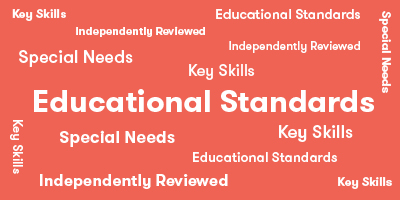
Core Standard*: Language
- Speaking & Listening
- Presentation of Knowledge and Ideas. Grade Levels 2nd
- Language
- Vocabulary Acquisition and Use. Grade Levels 2nd, 3rd

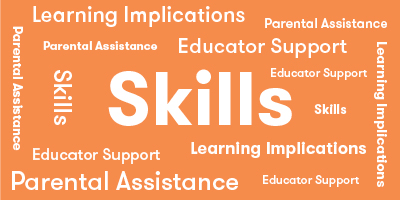
Determine
What Does Child Do To Use Skill In The Game?
The Artist needs to decide which two cards to use and what they will draw based on the two cards.
How Parents Can Assist Learning
No special adult support is needed.
If a children seem to be having difficulty deciding on what to draw, encourage them to make different combinations of words. For example, if the three word cards are sweet, cuddly and green, the child can combine sweet & cuddly, sweet & green, and cuddly & green. The child can try to think of something (ex: cat, grapes, or teddy bear) for each combination until they come up with something they feel confident in drawing.
Learning Implications and Educator Support
No special adult support is needed.
If a children seem to be having difficulty deciding on what to draw, encourage them to make different combinations of words. For example, if the three word cards are sweet, cuddly and green, the child can combine sweet & cuddly, sweet & green, and cuddly & green. The child can try to think of something (ex: cat, grapes, or teddy bear) for each combination until they come up with something they feel confident in drawing.
Compare
What Does Child Do To Use Skill In The Game?
Players who are guessing compare the object being drawn to the words on the cards in the game area.
How Parents Can Assist Learning
If children are having difficulty guessing correctly, encourage them to look at the words on the cards which may help them think of associations to the drawing. Also, they can ask for hints.
Learning Implications and Educator Support
ARTributes is good game for developing associated thinking skills, as children create connections between two words in order to determine what to draw. For example, the words "sweet" and "cuddly" can lead to drawing a cat or bunny.
Predict
What Does Child Do To Use Skill In The Game?
Prediction skills are lightly developed as the player who is drawing considers what other players may be able to recognize in order to decide what to draw.
How Parents Can Assist Learning
To help children who are impulsive, encourage them to think first before drawing. This can help them consider what others are most likely to guess, and to formulate a mental image of what they want to draw, which can help create a more successful image.
Learning Implications and Educator Support
In ARTributes, prediction requires changing perspective skills. Children will be more successful if they imagine being the other players, and think about what those players make know and be good a guessing.
Plan
What Does Child Do To Use Skill In The Game?
In ARTributes, planning happens concurrently with predicting as the drawer thinks about how to draw an object to get someone to guess accurately within the time.
How Parents Can Assist Learning
On their turn, the Artist does not need to start the timer until they have decided what to draw. To help children who are impulsive, encourage them to think first before drawing.
This can help them consider what others are most likely to guess, and to formulate a mental image of what they want to draw, which can help create a more successful image.
Learning Implications and Educator Support
In ARTributes, the Artist mentally plans for drawing by thinking about what to draw first, second and so on. For example, if the Artist is drawing a cat, they may start with face, whiskers, ears, body, and so on.
Educators can encourage children to think about first drawing what is most recognizable about the object, since the Artist is trying to get others to guess within one minute.
Experiment
What Does Child Do To Use Skill In The Game?
If players are not guessing the drawing, the Artist may change approach to drawing or draw a different object before the timer runs out.
How Parents Can Assist Learning
For younger children or when children are learning the game, allow the Artist to try sketching their object hidden from view of the other players. Once the Artist feels ready, they wipe their board clean, turn over the timer, and start drawing for the other players to guess.
Learning Implications and Educator Support
For younger children or when children are learning the game, allow the Artist to try sketching their object hidden from view of the other players. Once the Artist feels ready, they wipe their board clean, turn over the timer, and start drawing for the other players to guess.
Review
What Does Child Do To Use Skill In The Game?
Reviewing is not required in the game, but is helpful for learning.
How Parents Can Assist Learning
At the end of each turn, ask the Artist to explain how the two words they chose relate to the object they drew. Alternatively, ask the player who correctly guessed the object to explain how the words are associated to the object.
Learning Implications and Educator Support
At the end of each turn, ask the Artist to explain how the two words they chose relate to the object they drew. Alternatively, ask the player who correctly guessed the object to explain how the words are associated to the object.
Demonstrate
What Does Child Do To Use Skill In The Game?
The Artist demonstrates what they are thinking by trying to draw it.
How Parents Can Assist Learning
When an Artist is successful in getting others to guess the object they are drawing, ask "What did you do that worked so well?" This encourages the child to talk about and even demonstrate their strategy.
On another round, ask the guesser "What did you see and think about that helped you guess the drawing correctly?"
Learning Implications and Educator Support
When an Artist is successful in getting others to guess the object they are drawing, ask "What did you do that worked so well?" This encourages the child to talk about and even demonstrate their strategy.
On another round, ask the guesser "What did you see and think about that helped you guess the drawing correctly?"
In this way children can learn from each other. Educators can also encourage children to assist each other by pointing out alternatives drawing approaches that may not have been considered by the Artist.
Imagine
What Does Child Do To Use Skill In The Game?
Based on the two words they select, the Artist needs to think about what to draw (ex: cat) and imagine drawing it (ex: face of cat, whole body, etc).
How Parents Can Assist Learning
ARTributes is a good game for developing imagination skills. At first, there are three word cards face up. The Artist needs to combine two of those together and try to think of something to draw. Then, the Artist needs to generate a mental image of their object before actually starting to draw.
Learning Implications and Educator Support
ARTributes is a good game for developing imagination skills. At first, there are three word cards face up. The Artist needs to combine two of those together and try to think of something to draw. Then, the Artist needs to generate a mental image of their object before actually starting to draw.
Create
What Does Child Do To Use Skill In The Game?
Once the Artist has decided what to draw, they create the object by sketching it on their Dry-Erase Board.
How Parents Can Assist Learning
For younger children or when children are learning the game, allow the Artist to try sketching one or more objects they have imagined. Do this hidden from view of the other players. Once the Artist feels ready, they wipe their board clean, turn over the timer, and start drawing for the other players to guess.
Learning Implications and Educator Support
ARTributes is a great game for building creativity skills, including creative problem-solving and drawing.
Children can experiment with different approaches to drawing. Encourage the Artist to try sketching one or more objects they have imagined. Do this hidden from view of the other players. Once the Artist feels ready, they wipe their board clean, turn over the timer, and start drawing for the other players to guess.
*Data compiled from CCSSI ELA Standards, WA Science Standards, and Washington Social Studies Standards

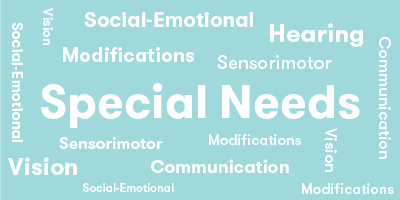
Cognitive
Suggestions for How to Modify Play Experience
If children can't read, have another player read the word on the cards. Children with a limited vocabulary may need words explained. Alternatively, remove cards that may be too difficult for the child with cognitive challenges to comprehend (e.g., clever, electronic).
Allow the player with cognitive challenges to have a playing partner to help them think about the words and possible objects or ideas associated with the words. Extend the time to two-minutes to allow for discussion and drawing. The Artist and partner step away from other players to keep from being overheard. For example, "Let's think of something that is "huge" and "tall." Brainstorm ideas quickly (e.g., a tree, an elephant, a house, etc.) Pick the easiest to draw. Partners can take turns drawing, or draw together on the same board, each drawing separate aspects of the picture.
Communication
Suggestions for How to Modify Play Experience
This is a good game for children who need support learning how to use adjectives. Making visual associations with the written words may help develop narrative skills. After each picture is drawn players should explain the association between the object and the characteristics.
Children with a limited vocabulary may need words explained to them. Alternatively, remove cards that may be too difficult for the child with cognitive challenges to comprehend (e.g., clever, electronic)
Sensorimotor
Suggestions for How to Modify Play Experience
For children with fine motor problems who have difficulty drawing pictures, modify the game when it this child's turn to draw. Have the other players draw an object on their board based on two word cards. Then have the child turn over cards to find ones to associate with the other players' pictures. The players get one point for each agreed upon association.
Allow the player with motor challenges to have a partner. They can work together to determine what to draw to match the adjectives, then the non-motor challenged player can draw the picture.
Social Emotional/Behavioral
Suggestions for How to Modify Play Experience
Players who get overly frustrated with the time limit may want to quit the game if they feel they cannot succeed. Extend the time to two-minutes drawing time for players who need more time to process the words, think of objects, and draw.
Children who have emotional concerns may benefit from having a partner. The partner helps moderate the other child's emotions, impulsivity, and helps reduce frustration by offering ideas and/or drawing during their turn as Artist.
Vision
Suggestions for How to Modify Play Experience
Children who have vision problems may benefit from playing with a partner. They can brainstorm items to draw associated with the words and let the non-vision impaired player draw the object.
Hearing
Suggestions for How to Modify Play Experience
Children with hearing impairments or deafness should not have difficulty playing the game. Hearing is not needed to be able to read the adjective cards or determine what is being drawn. However, vocal ability or signs are needed to respond to what is being drawn by the Artist. If sign is used, all players need to understand sign or have a sign interpreter.
*Data compiled from CCSSI ELA Standards, WA Science Standards, and Washington Social Studies Standards

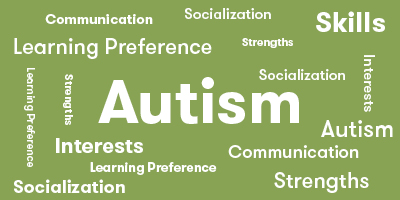
Autism Strengths & Interests
Short Summary of Strengths & Interests
- Vocabulary/language development
- Imagination/creativity
- Fine motor skills
Is good at matching visual items
Is This Game Appropriate? No
Description
Players do not need to match visual items, but they do need to identify the objects being drawn.
Has a good memory for sensory details, including visual, touch, taste and smell
Is This Game Appropriate? Yes
Description
Players need to have a good memory for details of objects so they can identify what may be developing in the drawing.
Has a good memory for words, phrases and dialouge
Is This Game Appropriate? No
Description
Players do not need to remember words, but they do need to know what the various adjectives on the cards mean.
Has a good memory for pictures, numbers and patterns
Is This Game Appropriate? Yes
Description
Players need to have a good memory for details of objects so they can identify what may be developing in the drawing.
Likes to put things in order or a sequence
This game is not appropriate
Learns through visualizing or "replaying" actions in their mind
Is This Game Appropriate? Yes
Description
Players need to have a good memory for details of objects so they can identify what may be developing in the drawing. This involves mentally visualizing and associating the adjectives with the visuals that are drawn.
Likes activities with rules, such as math and phonics
This game is not appropriate
Is very concrete and literal
This game is not appropriate
Learns in small "chunks" (for example, phone numbers are 3 chunks of number xxx-xxx-xxxx that are combined together)
This game is not appropriate
Is good at nonverbal reasoning and logic
Is This Game Appropriate? Yes
Description
Players analyze the evolving picture as it is drawn and use reasoning to associate it with the selected adjectives.
Likes spatial problem solving
This game is not appropriate
Can read well with good vocabulary, though may not fully comprehend content
Is This Game Appropriate? Yes
Description
Players need to read the adjective cards and understand their meaning.
Likes to use and has good fine motor skill
Is This Game Appropriate? Yes
Description
The player who is the Artist needs to have good fine motor skills to illustrate their ideas in a visual representation.
Likes established routines or set ways of doing things
This game is not appropriate
Likes manipulating, constructing or building things
This game is not appropriate
Likes to use and has good musical abilities
This game is not appropriate
Likes to use and has good drawing skills
Is This Game Appropriate? Yes
Description
Drawing skills are key to being able to play ARTributes well.
Autism Special Considerations
Appears to ignore other's communication and/or has difficulty giving eye contact to a communication partner
Is This Game Appropriate for Child with Characteristic? Yes
Can Child with Characteristic Play Game w/o Modification? Yes
Strategies for Developing Compensatory Skills:
No eye contact with other players is needed. However, players do need to attend to the Artist's drawing.
Has difficulty understanding complex verbal directions
Is This Game Appropriate for Child with Characteristic? Yes
Can Child with Characteristic Play Game w/o Modification? No
Strategies for Developing Compensatory Skills:
Players may need to have the sequence of play illustrated through several turns to help them relate the words in the game to the pictures.
Uses vocabulary inaccurately or demonstrates echolalia (repeating another's speech)
Is This Game Appropriate for Child with Characteristic? No
Can Child with Characteristic Play Game w/o Modification? No
Strategies for Developing Compensatory Skills:
Echolalia may interfere with players attention to the Artist's drawing. Also, players need to call out what they think the Artist is drawing, not repeat what other players say.
Gets stuck repeating a verbal topic or physical actions and/or has difficulty attending to others' actions or topic.
Is This Game Appropriate for Child with Characteristic? No
Can Child with Characteristic Play Game w/o Modification? No
Strategies for Developing Compensatory Skills:
Has difficulty producing speech/communication
Is This Game Appropriate for Child with Characteristic? Yes
Can Child with Characteristic Play Game w/o Modification? No
Strategies for Developing Compensatory Skills:
Players need to be able name what the Artist is drawing. If the child has the ability to label simple objects, ARTributes may not be too challenging.
Has difficulty sequencing multi-step actions and/or doing complex abstract tasks
Is This Game Appropriate for Child with Characteristic? Yes
Can Child with Characteristic Play Game w/o Modification? Yes
Strategies for Developing Compensatory Skills:
The game does not require sequencing.
Demonstrates difficulty initiating and maintaining social interactions
Is This Game Appropriate for Child with Characteristic? Yes
Can Child with Characteristic Play Game w/o Modification? Yes
Strategies for Developing Compensatory Skills:
Players need to watch and respond to what is being drawn by the Artist. Communication among players beyond that is not necessary, although it is helpful if the child can participate in asking for and listening to hints.
Acts out or demonstrates avoidance behaviors when frustrated, overwhelmed, or needs more sensory input.
Is This Game Appropriate for Child with Characteristic? No
Can Child with Characteristic Play Game w/o Modification? No
Strategies for Developing Compensatory Skills:
Players who have behaviors that inhibit their own or others' attention may not be a good match for ARTributes.
Has short attention span for non-preferred activities
Is This Game Appropriate for Child with Characteristic? Yes
Can Child with Characteristic Play Game w/o Modification? Yes
Strategies for Developing Compensatory Skills:
Many children with autism prefer visual activities. For these children ARTributes may be a good game. They will enjoy watching the evolution of the drawing and identifying what it represents. For children who do not enjoy visual drawings, ARTributes may not be a preferred activity.
Needs sameness or consistent routines and/or has difficulty with transitions from one activity to another
Is This Game Appropriate for Child with Characteristic? Yes
Can Child with Characteristic Play Game w/o Modification? Yes
Strategies for Developing Compensatory Skills:
Although the game sequence is the same for each turn, the words and drawings will differ for each round of play. As long as the child likes the game sequence and visual challenges, ARTributes may be a good game. Other players can help the child transition to the game by pointing out that the game involves pictures and showing the child a picture drawn on the white board.
Has difficulty understanding others' feelings, intentions, and the reasons for others' actions.
Is This Game Appropriate for Child with Characteristic? Yes
Can Child with Characteristic Play Game w/o Modification? Yes
Strategies for Developing Compensatory Skills:
Players do not have to understand feelings, but they do need to think about what the Artist is intending to draw related to the words selected. Understanding the meaning of the adjectives will help the players analyze what is being drawn and infer the relationship to the words.
*Data compiled from CCSSI ELA Standards, WA Science Standards, and Washington Social Studies Standards

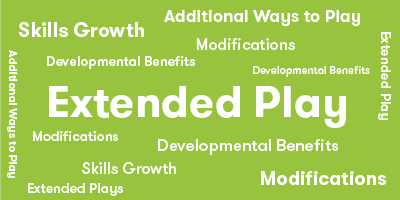
Extra Ways to Play the Game
Don't discard a card. Instead, have players guess which words were selected by observing what is drawn by the Artist. Players earn points by identifying the correct adjectives.
Materials Needed
No additional materials needed.
Developmental Benefits
This adaptation promotes associational or analytic thinking by having players first identify the object drawn, then identify which adjectives were selected. Players thus need to identify characteristics of the object(s) drawn that match the options on the adjective cards.
Extra Ways to Play the Game
All three words must be depicted in a picture and players must explain how each is associated with the picture to earn points. For "magical" "hairy" "light", a player drew a top hat with a light bulb being pulled from the hat by a hairy hand. Players must identify what is "magical," what is "hairy," and what is "light." If a word is not represented, points are not given.
Materials Needed
No additional materials needed.
Developmental Benefits
This adaptation requires players to think in terms of a narrative that will illustrate the adjectives displayed and encourages players to think in terms of object characteristics.
Extra Ways to Play the Game
Lay four cards on the table for all players to see. The Artist draws a picture that depicts an object or scene associated with two of the words. Players have to identify which two words were selected and how they are associated with the picture.
Materials Needed
No additional materials needed.
Developmental Benefits
This modification requires players to not only identify the picture drawn, but also think about what adjectives are most appropriate to describe the object of scene.
Extra Ways to Play the Game
Lay four cards on the table for all players to see. All players are Artists. Each player now guesses which two words each Artist depicts.
Materials Needed
No additional materials needed.
Developmental Benefits
This modification allows all players to be engaged in drawing during each turn. This allows for more practice in drawing and increases the opportunities for discussion and comparisons. Players also benefit from analyzing each other's pictures to determine which adjectives are best matches for each picture.
*Data compiled from CCSSI ELA Standards, WA Science Standards, and Washington Social Studies Standards
Game Details
- 108 Cards
- 6 Dry-Erase Boards
- 6 Dry-Erase Markers
- 1 One-Minute Sand Timer
- 1 Rules Booklet
- Choosing a selection results in a full page refresh.
- Opens in a new window.









